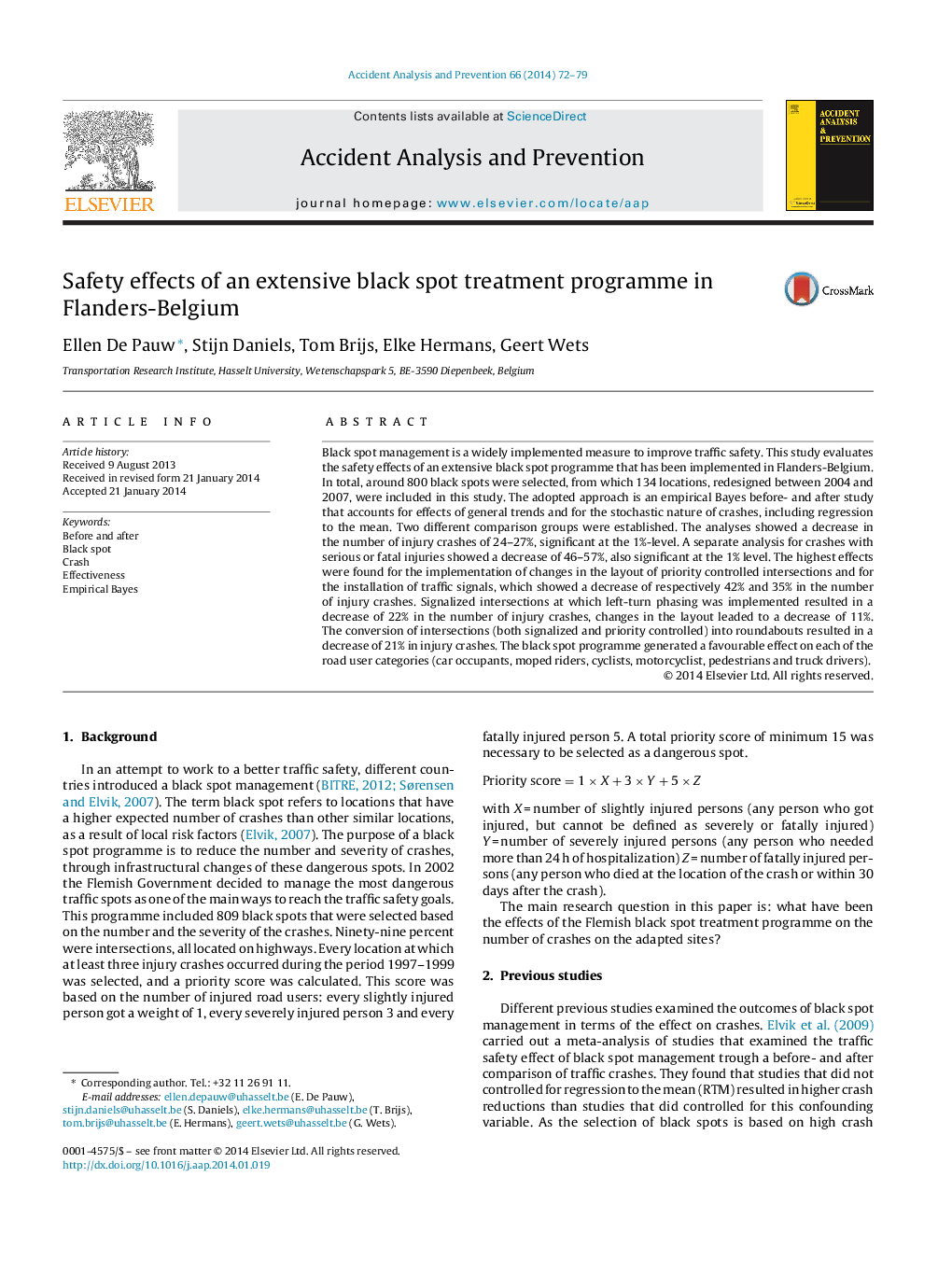| Article ID | Journal | Published Year | Pages | File Type |
|---|---|---|---|---|
| 572371 | Accident Analysis & Prevention | 2014 | 8 Pages |
•Evaluation of the traffic safety effects of the black spot programme in Flanders-Belgium.•Black spot treatment generated a high decrease in the number of crashes, both for all injury crashes as for the severe crashes.•The highest effects were found for priority controlled intersections with changes in the layout and the intersections at which traffic signals were installed.•On the level of casualties, a significant decrease was found for every road user category.
Black spot management is a widely implemented measure to improve traffic safety. This study evaluates the safety effects of an extensive black spot programme that has been implemented in Flanders-Belgium. In total, around 800 black spots were selected, from which 134 locations, redesigned between 2004 and 2007, were included in this study. The adopted approach is an empirical Bayes before- and after study that accounts for effects of general trends and for the stochastic nature of crashes, including regression to the mean. Two different comparison groups were established. The analyses showed a decrease in the number of injury crashes of 24–27%, significant at the 1%-level. A separate analysis for crashes with serious or fatal injuries showed a decrease of 46–57%, also significant at the 1% level. The highest effects were found for the implementation of changes in the layout of priority controlled intersections and for the installation of traffic signals, which showed a decrease of respectively 42% and 35% in the number of injury crashes. Signalized intersections at which left-turn phasing was implemented resulted in a decrease of 22% in the number of injury crashes, changes in the layout leaded to a decrease of 11%. The conversion of intersections (both signalized and priority controlled) into roundabouts resulted in a decrease of 21% in injury crashes. The black spot programme generated a favourable effect on each of the road user categories (car occupants, moped riders, cyclists, motorcyclist, pedestrians and truck drivers).
